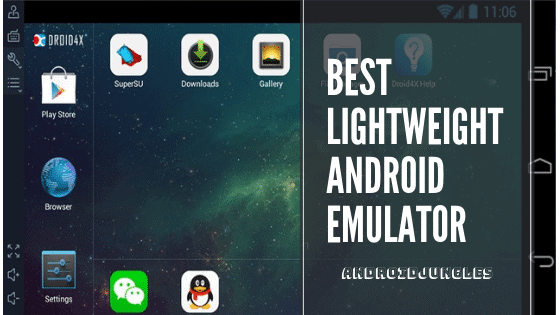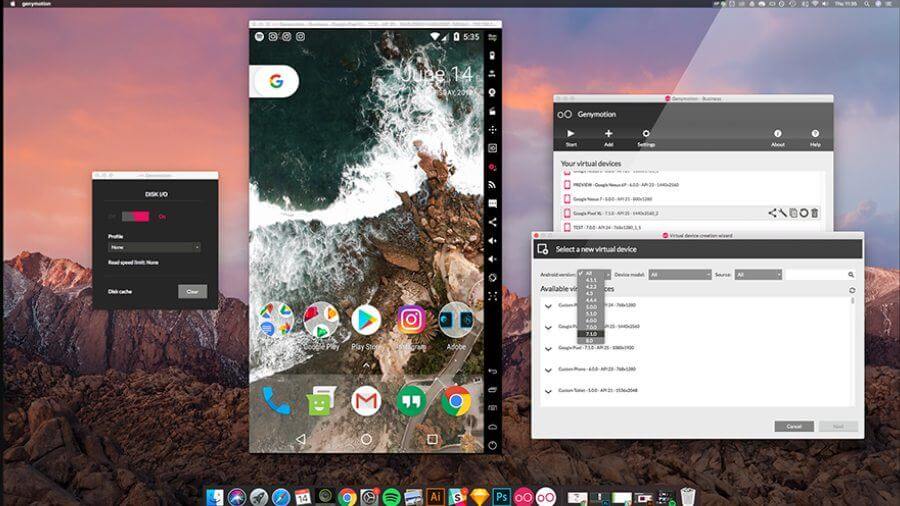
- #Best android emulator for ubuntu vm on a mac for mac
- #Best android emulator for ubuntu vm on a mac install
- #Best android emulator for ubuntu vm on a mac android
- #Best android emulator for ubuntu vm on a mac iso
#Best android emulator for ubuntu vm on a mac android
To ensure their application’s reliability, android app and game developers often want to test their creations on as many different devices and software as possible.

Other than gamers, the top use for emulators is for development. Most of these tricks are not illegal, making the method hugely popular amongst gamers of all sorts. Emulators provide gamers with handy tricks for easier gameplay as well as opens the door to previously inaccessible games on their devices. The most common use for emulators today is for gaming.

#Best android emulator for ubuntu vm on a mac for mac
Keep reading for our list of Android emulators available for Mac and PC use. The only thing I’m missing are shared clipboards and drag-and-drop of files (which are available when installing the VirtualBox Guest Additions).Best Android Emulators for Mac & PC of 2019 Are Android Emulators really that useful? Well, whether you are an app developer who wants to test their creation before its release, or a gamer who wants to incorporate a mouse or keyboard into various games, Android emulators may prove to be very helpful in achieving your goals.Īlthough the process is often difficult and requires technical knowledge, the end result can definitely be worth your while.

I didn’t have to configure any display scaling for HiDPI screens as it worked out of the box. In my experience QEMU is faster, more responsive and uses less CPU/RAM than VirtualBox. display default,show-cursor=on Conclusion
#Best android emulator for ubuntu vm on a mac iso
When running the VM we don’t need the Ubuntu ISO mounted and can remove it by leaving out the -cdrom option: qemu-system-x86_64 \ Follow the installation steps and don’t restart the VM at the end of the installation, instead shut it down by stopping the qemu process with CTRL-C on the host. Now after the machine is booted up the Ubuntu installer will run. However when using -cpu Nehalem ( also an i7 CPU) everything worked well. My machine has an IvyBridge processor (Core i7): $ sysctl -n _stringĪnd using -cpu IvyBridge would fail. I fixed it by specifying the CPU architecture manually (see qemu-system-x86_64 -cpu help for a list of all available architectures).
#Best android emulator for ubuntu vm on a mac install
Once the installation is done, we can create the disk image that we’re going to install Ubuntu on. It will pull in a few dependencies (the package depends on 14 other packages) and the installation can take a few minutes. The version we’re using in this tutorial is 5.1.0: $ brew install qemuĬopyright (c) 2003-2020 Fabrice Bellard and the QEMU Project developers This changed 2 years ago when the project added support for the macOS native hypervisor with amework (HVF) as an accelerator.īefore we begin with the setup I assume that the Ubuntu 20.04 Desktop ISO has been downloaded in the current working directory. Using QEMU on macOS used to be very slow as no accelerator was available. The most popular accelerator is KVM which is built into the Linux kernel and allows Linux hosts to run VMs with native performance. QEMU is a hardware emulator which can make use of different accelerators when running VMs. Note for users on macOS 11.0: follow this post first to get qemu to run. In this blog post we’re going to create a Ubuntu 20.04 VM using QEMU on MacOS.

Using QEMU to create a Ubuntu 20.04 Desktop VM on macOS Home Using QEMU to create a Ubuntu 20.04 Desktop VM on macOS September 20, 2020


 0 kommentar(er)
0 kommentar(er)
